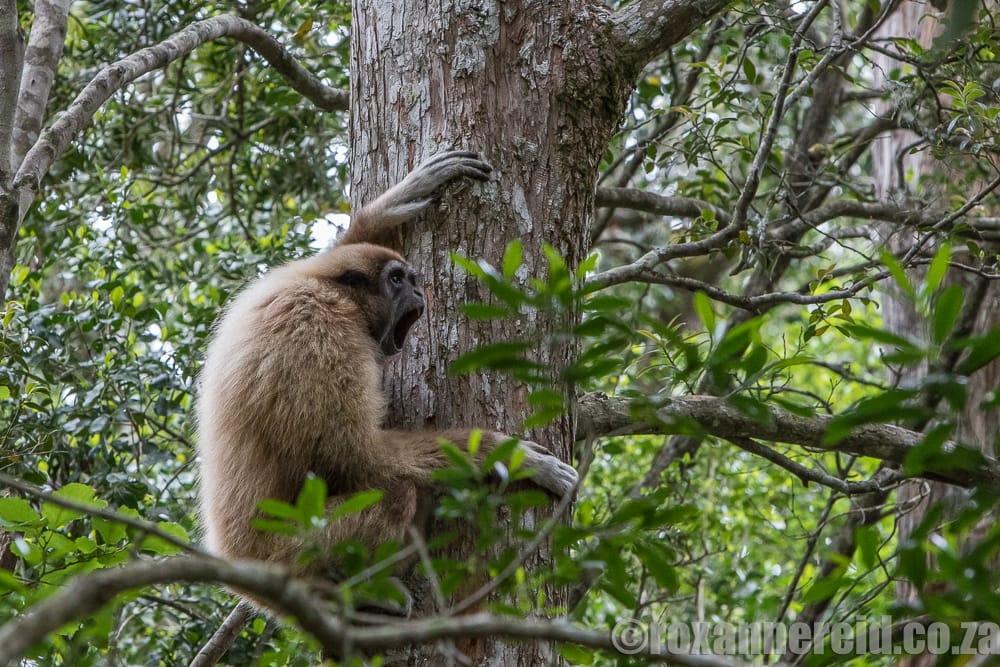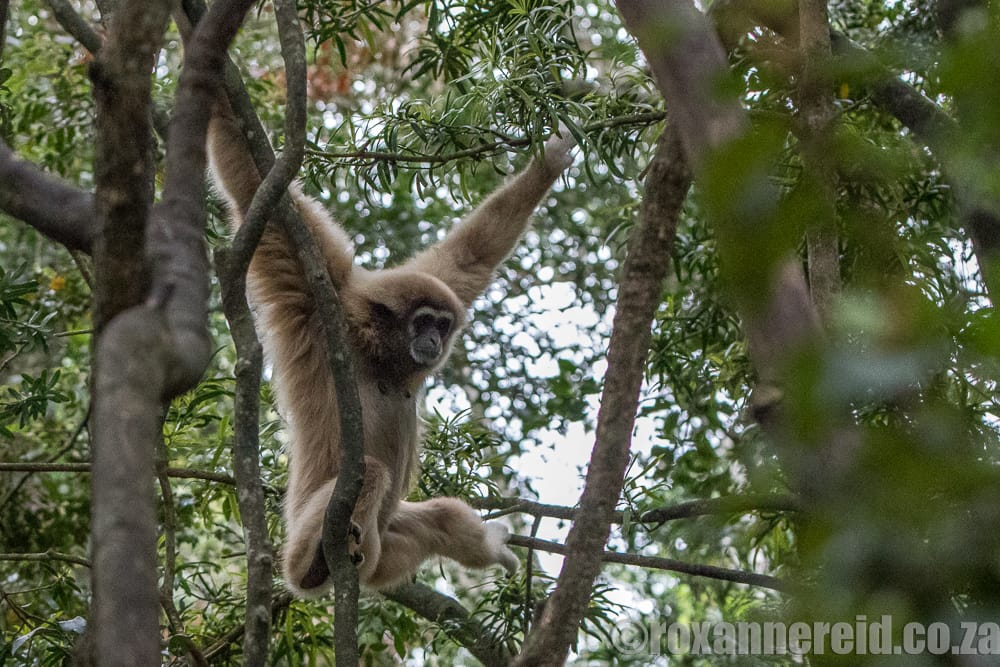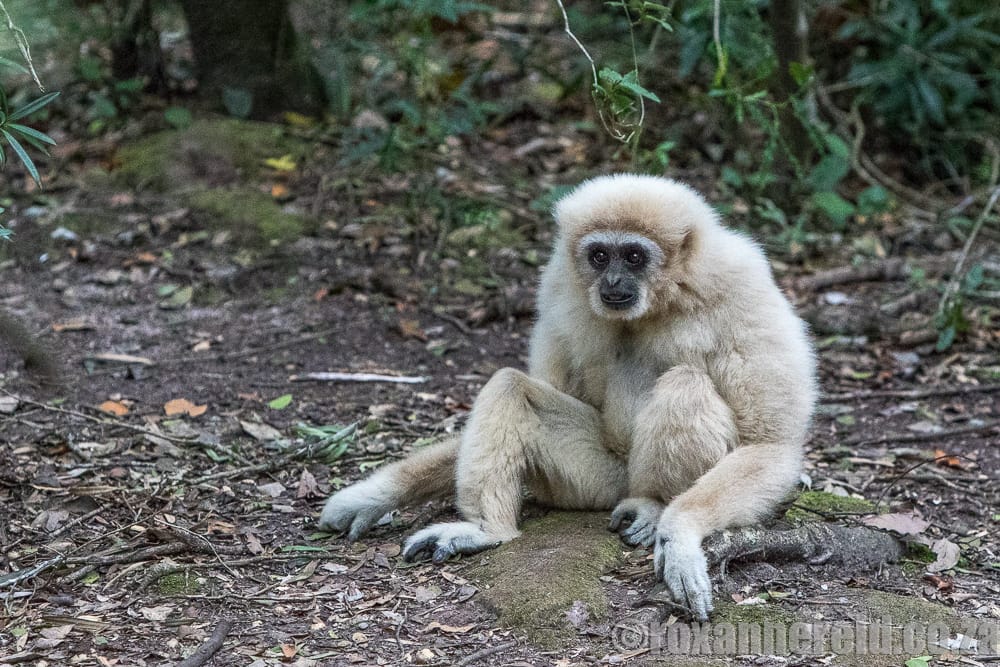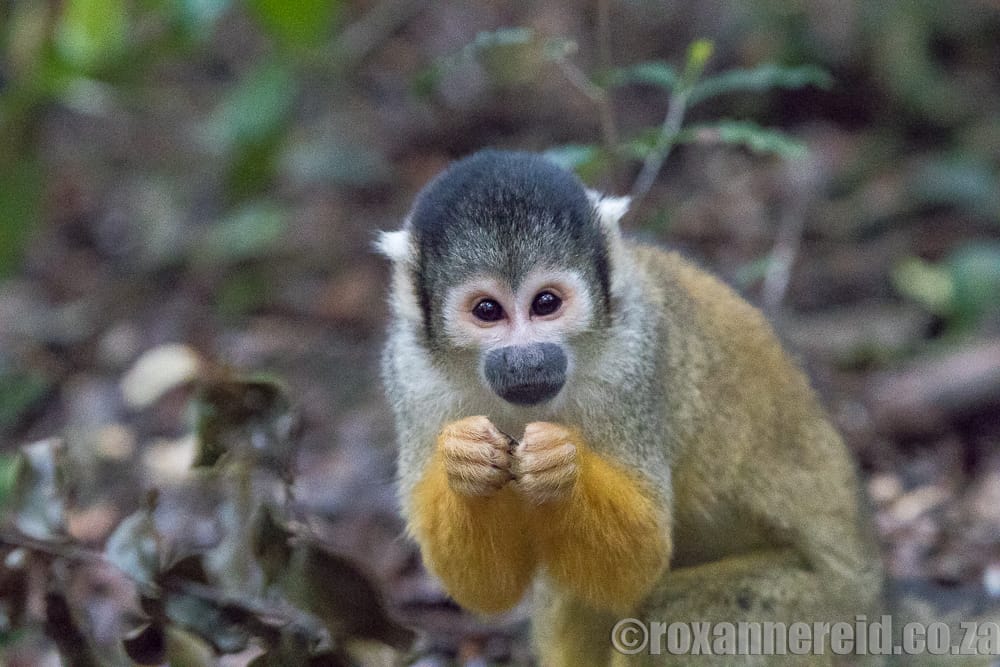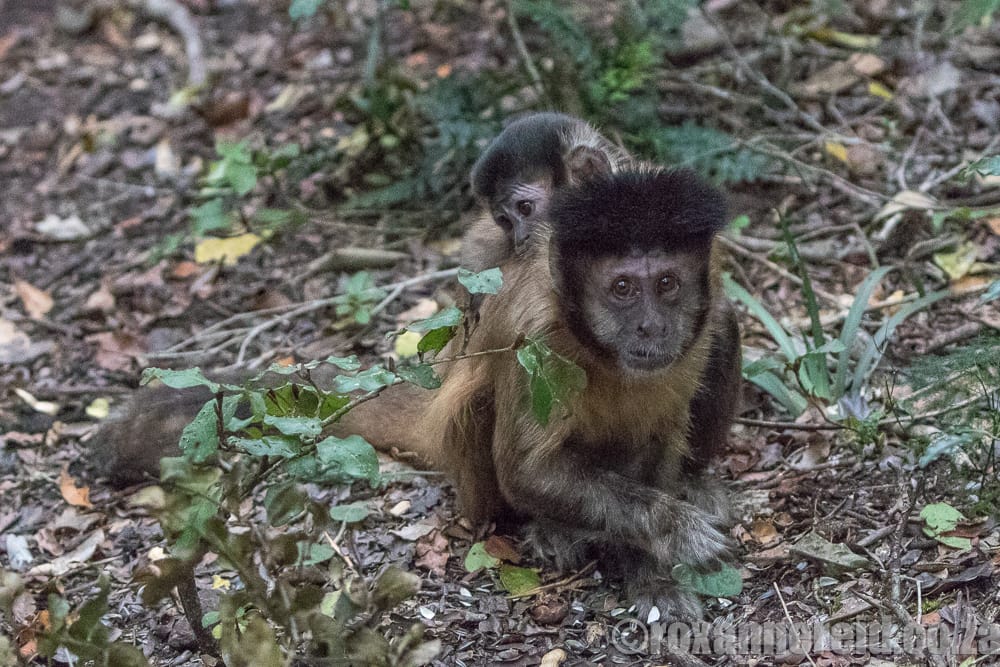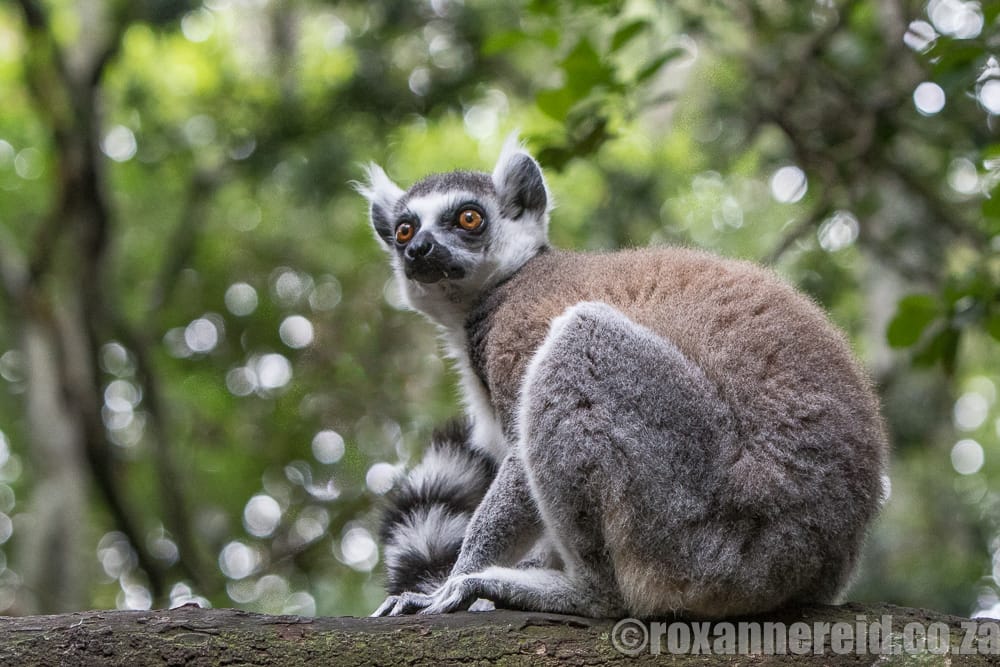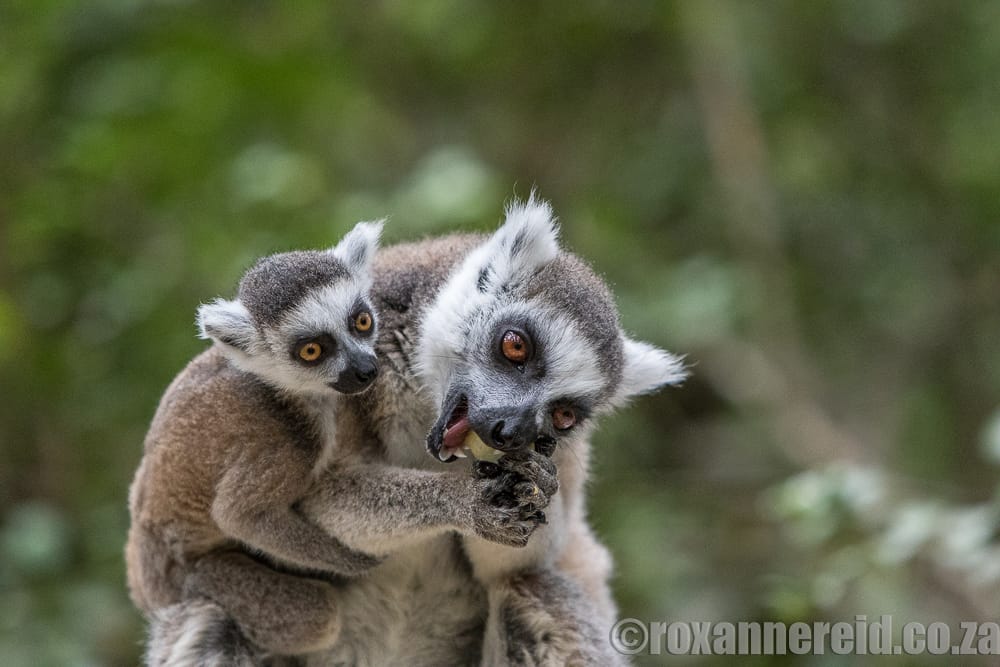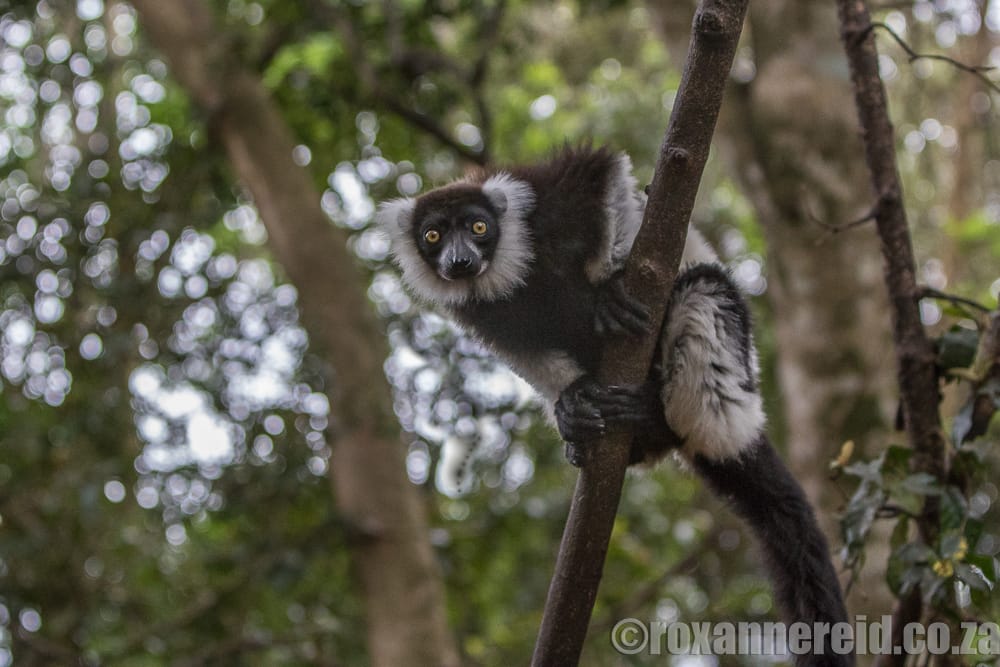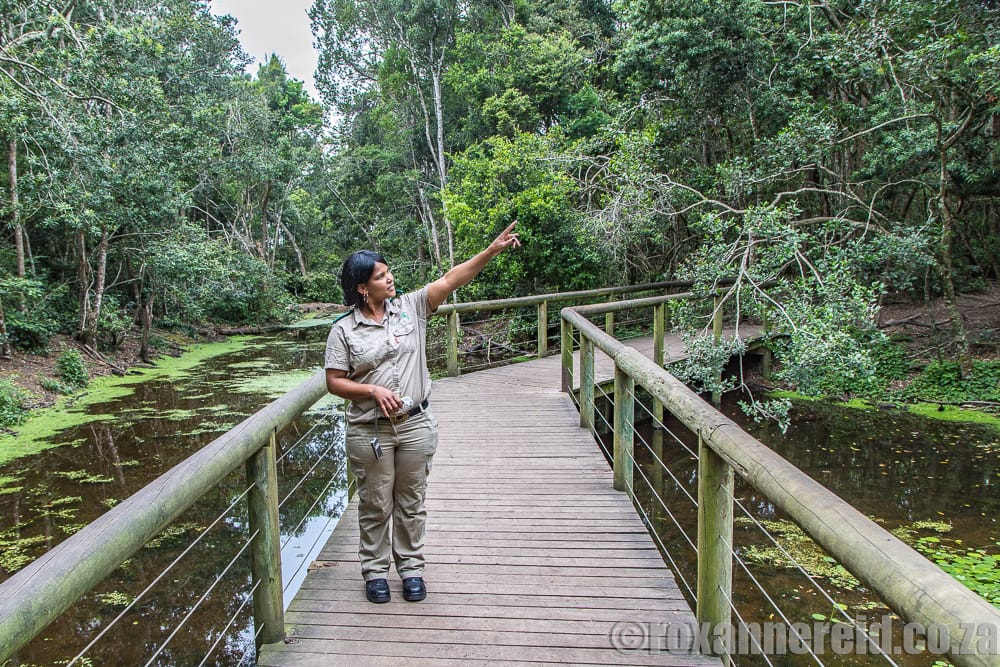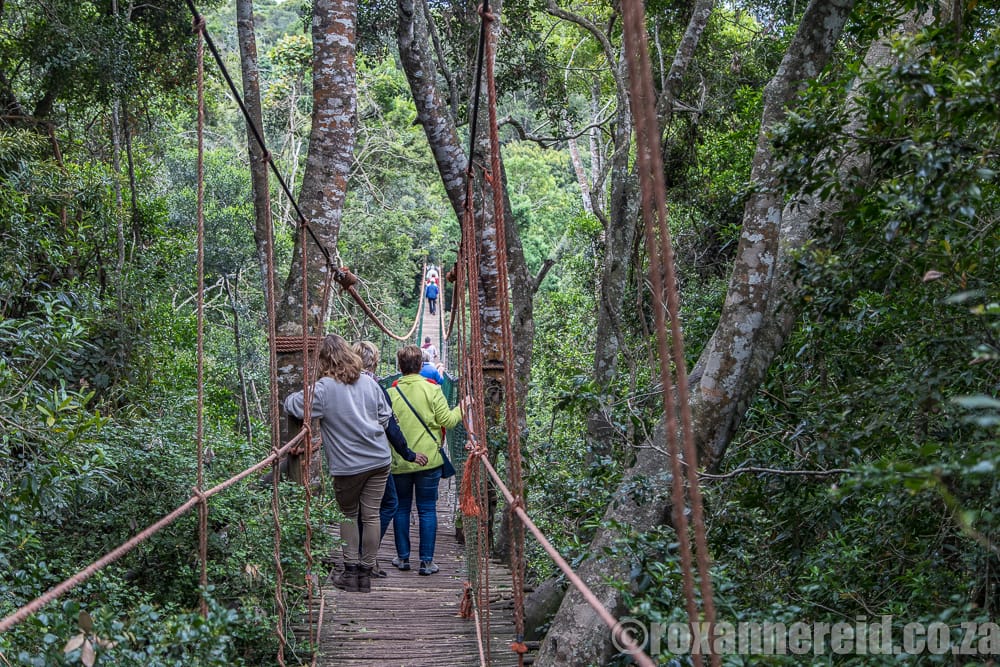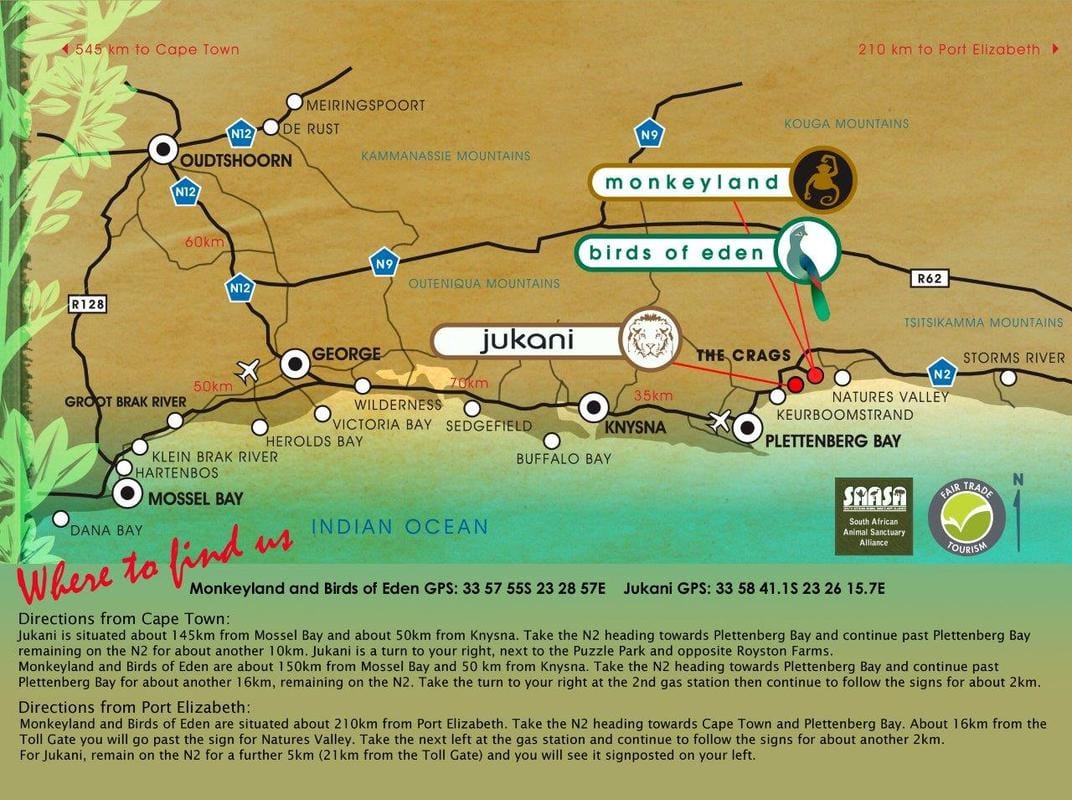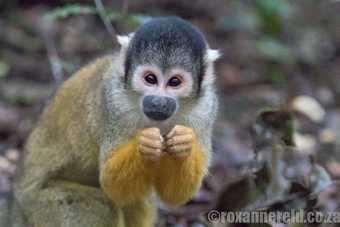
By Roxanne Reid
Take a holiday on South Africa’s Garden Route and you’ll find lots of things to keep you amused. If you’re looking for a great day out for people of all ages, here’s why you’ll love Monkeyland near Plettenberg Bay and meeting some of its entertaining residents.
Take a holiday on South Africa’s Garden Route and you’ll find lots of things to keep you amused. If you’re looking for a great day out for people of all ages, here’s why you’ll love Monkeyland near Plettenberg Bay and meeting some of its entertaining residents.
It was a cool and misty morning when we stepped into the indigenous Tsitsikamma Forest at Monkeyland Primate Sanctuary. A melancholy whoop rang out – the gibbons were calling from the trees, their voices rising to a deafening crescendo, the female’s call surprisingly deeper and slower than the male’s.
Apparently gibbon pairs sing this duet every day. ‘At first when the female arrived at Monkeyland she wanted nothing to do with our male,’ guide Felencia Draai explained. He persisted for two years until he finally won her over. ‘But they’re not the loudest of our residents – that would be the black howler monkey. Its call carries for five to six kilometres.’
Apparently gibbon pairs sing this duet every day. ‘At first when the female arrived at Monkeyland she wanted nothing to do with our male,’ guide Felencia Draai explained. He persisted for two years until he finally won her over. ‘But they’re not the loudest of our residents – that would be the black howler monkey. Its call carries for five to six kilometres.’
A dual purpose sanctuary
Monkeyland claims to be the world’s first free roaming multi-species primate sanctuary. It’s a sister sanctuary to the South African Animal Sanctuary Alliance (SAASA)’s Jukani and Birds of Eden sanctuaries. It’s Fair Trade accredited so you know it’s being run on ethical principles that include respect for the animals and their environment, as well as sustainability.
Monkeyland opened in 1998 with two main purposes. First, it serves as a ‘forever home’ for monkeys rescued from captivity. About 550 animals of 11 different species share 12ha of indigenous forest, where they can live in peace and feed on berries, fruits and leaves. The mere act of searching gives them mental stimulation they lacked in captivity.
Monkeyland claims to be the world’s first free roaming multi-species primate sanctuary. It’s a sister sanctuary to the South African Animal Sanctuary Alliance (SAASA)’s Jukani and Birds of Eden sanctuaries. It’s Fair Trade accredited so you know it’s being run on ethical principles that include respect for the animals and their environment, as well as sustainability.
Monkeyland opened in 1998 with two main purposes. First, it serves as a ‘forever home’ for monkeys rescued from captivity. About 550 animals of 11 different species share 12ha of indigenous forest, where they can live in peace and feed on berries, fruits and leaves. The mere act of searching gives them mental stimulation they lacked in captivity.
Since many of them originate from places like Indonesia or South America, their South African Garden Route diet has to be supplemented with around 350kg a day of fruit, veg, chicken, eggs, seeds and nuts. We watched a worker sprinkle nuts in their shells on the forest floor and the monkeys working hard to find and crack them open.
The sanctuary’s second purpose is to create awareness about the plight of primates and the threats they face. The idea is to educate visitors about the negative effects of keeping primates as pets or participating in the pet-play-pay industry that’s rife throughout the world.
The experience
A guide takes you on an hour-long walk through the forest to see monkeys, lemurs and apes roaming freely through the trees and among the leaf litter. You’ll learn about their habits and abilities, and hear about the short- and long-term hardships of captivity.
The sanctuary’s second purpose is to create awareness about the plight of primates and the threats they face. The idea is to educate visitors about the negative effects of keeping primates as pets or participating in the pet-play-pay industry that’s rife throughout the world.
The experience
A guide takes you on an hour-long walk through the forest to see monkeys, lemurs and apes roaming freely through the trees and among the leaf litter. You’ll learn about their habits and abilities, and hear about the short- and long-term hardships of captivity.
One example is the male white-handed gibbon. Although gibbons don’t have tails, they use their long arms to swing through the forest at speeds of up to 35km/h. ‘In the wild they’re canopy dwellers that seldom come to the ground,’ said Felencia, ‘but because he was raised in captivity our male gibbon tends to stay on the ground quite a bit.’ We watched him walk on his back legs along a forest path, his long arms raised above his head for balance.
We saw a small group of Geoffroy’s spider monkeys, which originate from South and Central America. Their arms are longer than their legs and they have a prehensile tail that they use as an extra arm. It can support their whole body weight of up to 9kg. Seeing them interact with others in the group was a reminder of how far they’ve come from their lives in captivity, where such natural primate behaviour is denied them.
South American squirrel monkeys and hooded capuchins foraged together in a gang, some of them grabbing up fistfuls of nuts before carrying them away. Cute as they look, squirrel monkeys have a rather less cute habit of peeing on their hands and rubbing themselves with it to mark their territory.
Both species are highly intelligent and the capuchins even know how to use tools; for instance, they’ll open nuts with rocks. They have a tuft of dark hair on their heads and each ‘hairstyle’ is a little different. We amused ourselves deciding whether they looked like devil’s horns or Elvis or Tina Turner – you get the idea.
Both species are highly intelligent and the capuchins even know how to use tools; for instance, they’ll open nuts with rocks. They have a tuft of dark hair on their heads and each ‘hairstyle’ is a little different. We amused ourselves deciding whether they looked like devil’s horns or Elvis or Tina Turner – you get the idea.
Queen Julienne
For me the most fascinating residents were the lemurs – the black and white ruffed lemur that barks like a dog and the famous ring-tail lemur that’s well known to millions from the animated movie Madagascar. I always thought King Julien was a bit camp and at Monkeyland I discovered that in the real world it’s the females that are dominant, so Queen Julienne it should be!
For me the most fascinating residents were the lemurs – the black and white ruffed lemur that barks like a dog and the famous ring-tail lemur that’s well known to millions from the animated movie Madagascar. I always thought King Julien was a bit camp and at Monkeyland I discovered that in the real world it’s the females that are dominant, so Queen Julienne it should be!
Both sexes scent mark the boundaries of their territory. Males will also have ‘stink fights’ where one will rub the scent gland on his tail against another male, who might retaliate with his own stinky tail. These stink fights can last up to an hour – just the sort of thing 10-year-old boys will find fascinating.
Watching lemurs was a reminder of the threat to these Madagascan endemics from the destruction of the rainforest where they live in the wild. If the rainforest disappears, so will they.
The pond and the suspension bridge
On our walk through the forest we noticed some large cages and asked Felencia what they were about. ‘We use them as pre-release cages so that new animals that have been in captivity can get used to the forest environment before they’re released,’ she said. ‘We monitor their interactions with other monkeys and with humans and usually release them after about three months.’
On our walk through the forest we noticed some large cages and asked Felencia what they were about. ‘We use them as pre-release cages so that new animals that have been in captivity can get used to the forest environment before they’re released,’ she said. ‘We monitor their interactions with other monkeys and with humans and usually release them after about three months.’
We stopped at a pond with a wooden bridge. Vervet monkeys occur naturally in this forest and Felencia said that on hot summer days they come here to cool off and play in the water. But on that overcast day the pool was deserted.
Our Monkeyland adventure ended on a 128m long suspension bridge. ‘It’s 20m off the ground so you get into the tree canopy to see the monkeys in their natural habitat,’ she explained. And that’s where we found a troop of vervets, scampering along the ropes.
Our final sighting was of a Hanuman langur, or temple monkey. They come from India, where they are protected by law and believed to be sacred. Although their low brows and downturned mouths make them look grumpy, they’re apparently non-aggressive in the wild and live even in big cities.
Our final sighting was of a Hanuman langur, or temple monkey. They come from India, where they are protected by law and believed to be sacred. Although their low brows and downturned mouths make them look grumpy, they’re apparently non-aggressive in the wild and live even in big cities.
Need to know
You may also enjoy
Why to visit Jukani Wildlife Sanctuary near Plett
Copyright © Roxanne Reid - No words or photographs on this site may be used without permission from roxannereid.co.za
- Find Monkeyland just off the N2 about 15km east of Plettenberg Bay (see map and directions).
- Unless you’re a big group of more than 15, simply rock up. Tours run every 15 or 20 minutes so it won’t take long before there’s one for you to join.
- Monkeyland is open from 8:00 every day of the week, including Sundays. The last tour leaves at 16:00.
- There’s a shop and restaurant on site and plenty of parking.
- You can buy a ticket just for Monkeyland, or a reduced-rate cluster ticket that will also give you access to SAASA sister sanctuaries, Birds of Eden and Jukani Wildlife Sanctuary (big cats).
You may also enjoy
Why to visit Jukani Wildlife Sanctuary near Plett
Copyright © Roxanne Reid - No words or photographs on this site may be used without permission from roxannereid.co.za
